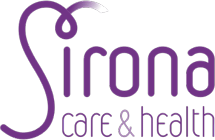Could hepatitis C treatments help prevent virus transmission?
An international team of researchers has shed light on the potential impact of new drugs for hepatitis C virus (HCV). HCV is an important cause of liver cancer and is transmitted through blood to blood contact.
- 18th May 2016
An international team of researchers has shed light on the potential impact of new drugs for hepatitis C virus (HCV).
HCV is an important cause of liver cancer and is transmitted through blood to blood contact. People who inject drugs (PWID) and men who have sex with men (MSM), who are also infected with HIV, are key risk groups for HCV infection in UK.
New HCV treatments are highly effective, with cure rates often better than 90 per cent, but treatment is expensive and patients with severe liver disease are being prioritised by NHS England.
The team, supported by funding from the NIHR and NIH, including researchers from the University of San Diego, University of Bristol, Public Health England as well as collaborators from London, Cambridge, Scotland, and Australia, has published a series of studies assessing the potential of HCV treatment in preventing HCV transmission, as well as future liver disease.
In a study looking specifically at HCV infection rates in HIV-positive gay men, the researchers found the proportion of HIV positive gay men with HCV increased slightly from 2004 to 2011, and that current treatment rates were unlikely to reduce HCV transmission over time.
Professor Peter Vickerman, from the University of Bristol’s School of Social and Community Medicine, said:
“Our results, based on modelling, suggest a combination of scaling up HCV treatment and behaviour modification may be required to have a substantial impact on HCV transmission among gay men.”
Using an economic model, the team also examined which patients should be prioritised for early HCV treatment. Professor Vickerman said:
“The model suggests that in most settings in the UK, the most cost-effective group to treat early were people who inject drugs with moderate or mild disease, due to the prevention benefit of reducing onward infection. For example, if chronic HCV infection was 20 per cent among PWID, then for every one PWID treated for HCV, two new HCV infections are averted. In contrast, if the risk of re-infection is high then HCV treatment should be delayed.”
Dr Natasha Martin, from the Division of Global Public Health at the University of California in San Diego said:
“We also studied the cost-effectiveness of HCV case finding among prisoners. That study suggested that increasing testing could be cost-effective with shorter duration HCV treatments, especially if HCV treatment rates were increased. The prevention benefit in the community of HCV treatment increases the cost-effectiveness of case-finding in prisons.
“Earlier analyses had suggested that HCV testing in prison was unlikely to be cost-effective, because continuity of care between prison and community couldn’t be guaranteed, as most prison sentences would exceed the average duration of treatment with traditional therapies.”
The team’s final study showed that HCV treatments need to be increased in order to reduce the number of cases of End Stage Liver Disease (ESLD) or HCV-related cancers or deaths. Strategies that target people with severe disease are unlikely to have any impact on reducing HCV transmission; while strategies that target people with mild disease, which is necessary to reduce HCV transmission, will have virtually no impact on ESLD within short to medium term.
Professor Matthew Hickman, from the School of Social and Community Medicine and Director of the Addictions Health Integration Team, said:
“The studies collectively show the potential benefits of HCV treatment for prevention. They are not intended, however, to question the targeting of scarce resources – while drug treatments remain expensive – for people with serious HCV related disease.
“Reversing trends in HCV-related mortality and morbidity should be the priority. However, our studies raise important hypotheses on the use of HCV treatment as prevention in combination with other interventions, which should be tested in order to guide future clinical and public health policy and practice. There is good evidence that HCV treatments have very high cure rates, but we need better evidence through research that HCV treatment also can reduce the incidence of disease.”
Papers
‘How should HCV treatment be prioritized in the direct-acting antiviral era? An economic evaluation including population prevention benefit’ by Natasha K Martin et al in Journal of Hepatology
‘New treatments for hepatitis C virus (HCV): scope for preventing liver disease and HCV transmission in England‘ by R J Harris et al in The Journal of Viral Hepatitis
‘Can Hepatitis C virus (HCV) direct-acting antiviral treatment as prevention reverse the HCV epidemic among men who have sex with men in the United Kingdom? Epidemiological and modelling insights‘ by Natasha K Martin & Alicia Thornton et al in Clinical Infectious Diseases
‘Is increased hepatitis C virus case-finding combined with current or 8-week to 12-week direct-acting antiviral therapy cost-effective in UK prisons? A prevention benefit analysis‘ by Natasha K Martin et al in Hepatology






